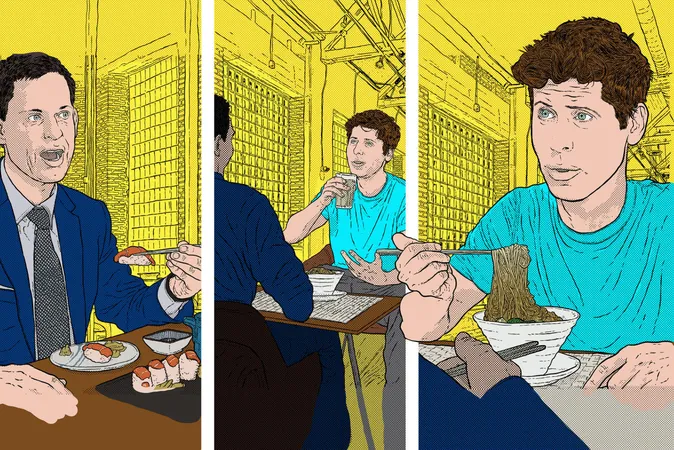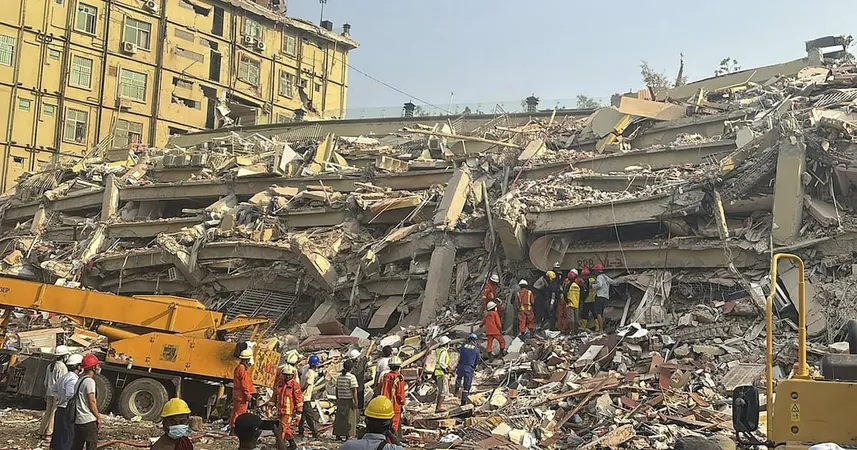
Urgent Warning: Global HIV Battle Faces Devastating Setbacks Due to Funding Cuts!
2025-03-28
Author: Jacob
Funding Cuts: A Recipe for Disaster
The study analyzed data from 26 countries and paints a grim picture: if international funding diminishes, we could see an alarming spike in new HIV infections, estimated between 4.43 million and 10.75 million by 2030. Among these staggering figures, up to 880,000 new infections could affect children, revealing the particularly vulnerable populations at risk.
In addition to new infections, the potential death toll could surge dramatically, with estimates ranging from 770,000 to 2.93 million additional fatalities due to HIV and AIDS-related complications—tragically, this includes up to 120,000 children. Sub-Saharan Africa, the epicenter of the HIV epidemic, stands to suffer the most. Despite notable advancements in treatment and prevention over recent years, setbacks could undo vital progress.
The Consequences of Stopped Treatment
The research highlights a critical point: discontinuing HIV treatment has dire repercussions for an individual's health and the wider community. When treatment ceases, HIV viral loads can spike, leading to rapid immune system decline. This not only hastens the progression to AIDS but also elevates the risk of transmission. Even brief interruptions in therapy can result in lasting damage, potentially triggering millions of new infections.
Moreover, reallocating funds from essential services like testing and prevention to maintain treatment for already infected individuals could exacerbate the crisis, leading to an additional 1.7 million new infections by 2030. These findings underscore the stark reality of a global health crisis on the brink of escalation.
The Lifeline of International Support
Critical to the fight against HIV are international donor programs such as PEPFAR and The Global Fund to Fight AIDS, Tuberculosis, and Malaria. Since 2015, these initiatives have provided nearly 40% of the funding needed for HIV-related services in low- and middle-income countries. This financial support is essential not just for treatment, but also for prevention efforts, outreach initiatives, and research into innovative interventions that could mitigate the spread of HIV.
Without continued support, the hard-won achievements of the past decade in HIV treatment and prevention stand to be drastically reversed.
The Time for Action is Now!
Currently, the impacts of funding disruptions are becoming painfully evident. Staffing shortages, supply chain issues, and increasing barriers to accessing vital prevention and treatment services are on the rise. The study emphasizes the critical need for innovative financing solutions, particularly those that incorporate HIV services into broader health systems at the national level. This integrative approach is vital to ensure HIV services persist, despite fluctuating global funding priorities.
In this battle against HIV, sustained international cooperation and investment are paramount. Countries must unite to preserve the hard-earned gains in HIV treatment and prevention, while also bolstering the capacity of their national health systems to manage these services long-term. Investing in robust HIV response programs isn't just about staving off new infections—it's about safeguarding lives, especially among the most vulnerable populations.
The fight against HIV is far from over. Now, more than ever, the world must rally together to prevent a devastating resurgence of the epidemic. Will we rise to the challenge? The clock is ticking!









 Brasil (PT)
Brasil (PT)
 Canada (EN)
Canada (EN)
 Chile (ES)
Chile (ES)
 Česko (CS)
Česko (CS)
 대한민국 (KO)
대한민국 (KO)
 España (ES)
España (ES)
 France (FR)
France (FR)
 Hong Kong (EN)
Hong Kong (EN)
 Italia (IT)
Italia (IT)
 日本 (JA)
日本 (JA)
 Magyarország (HU)
Magyarország (HU)
 Norge (NO)
Norge (NO)
 Polska (PL)
Polska (PL)
 Schweiz (DE)
Schweiz (DE)
 Singapore (EN)
Singapore (EN)
 Sverige (SV)
Sverige (SV)
 Suomi (FI)
Suomi (FI)
 Türkiye (TR)
Türkiye (TR)
 الإمارات العربية المتحدة (AR)
الإمارات العربية المتحدة (AR)